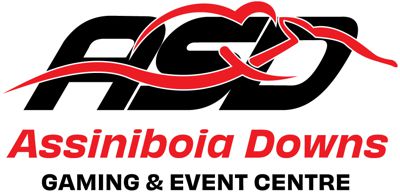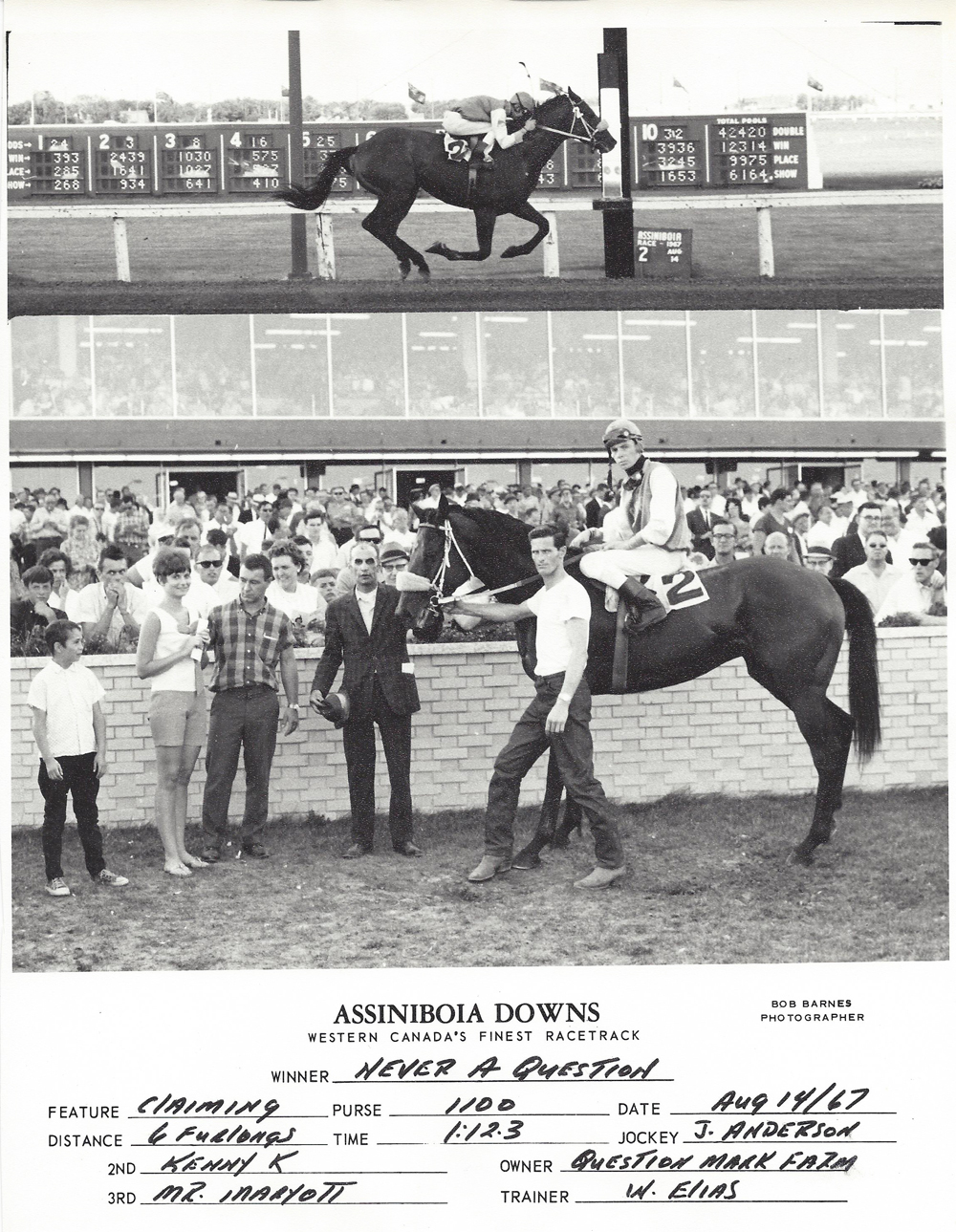
Never A Question wins at ASD on August 14, 1967.
by Bob Gates
For those of us who go back far enough, few would debate that Question Mark Farm was one of the more iconic stable names to have ever graced a barn at Assiniboia Downs.
Owner, trainer, breeder and Master of Question Mark Farm, Tommy Elias named his thoroughbreds after his first horse, Mr. Question, and that’s where it all starts. Mr. Question had a most distinctive blaze. While not a perfect “?” it was probably the closest you’ll ever see to one on the face of a horse.
From Mr. Question came the farm, the stable name, and its racing silks of blue, with a gold QMF on the back and white sleeves. It was a name you remembered.
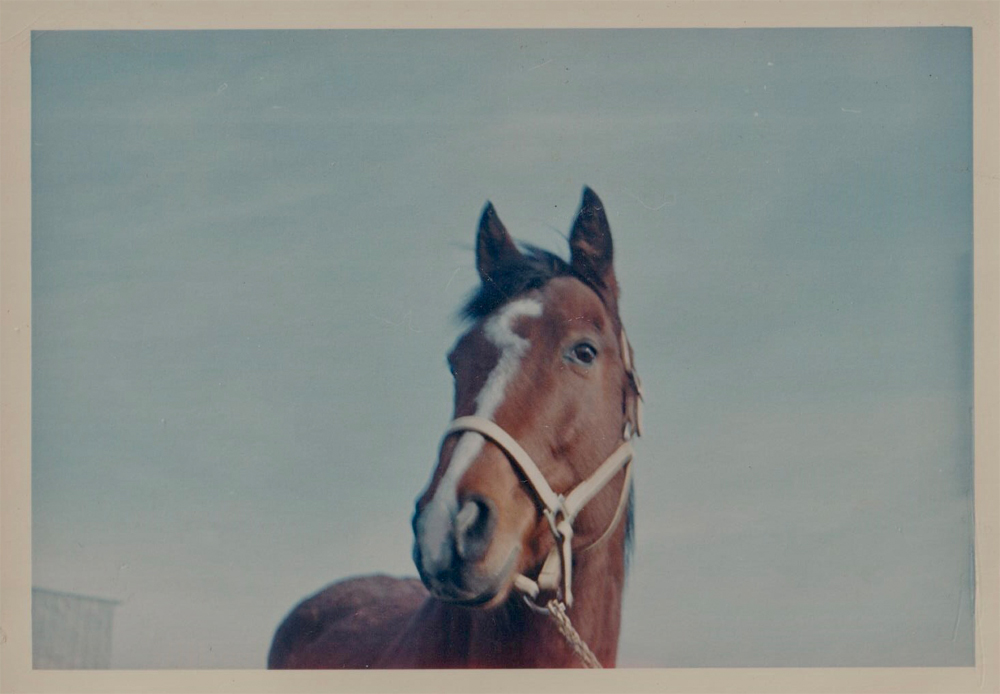
Mr. Question. The horse with the distinctive question mark.
Some of its horses? Well let’s see, besides Mr. Question there was:
Mrs. Question Question Me Not Question So Royal
Charming Question Dancing Question Native Question
Never A Question No Question Asked Northern Question
Ruling Question Skip The Question What A Question
Not all of Tommy’s charges were “Question” horses, but you can see the pattern. Its one that tends to leave a lasting impression. You simply could not forget the “Question” thoroughbreds, but what of Tommy Elias?
Here’s where the story gets challenging. Tommy Elias was an interesting and complex individual whose personality covered the spectrum. He was of Syrian heritage, and as a young boy he ran away from home and formal schooling to make his way in the world. He was one of those self-taught, hands-on types who possessed the ability to build anything. This would eventually lead to the formation of the Thomas Elias Manufacturing Company Ltd. located at 1061 Notre Dame Avenue in Winnipeg.
As founder and president, Tommy was involved with projects that might surprise you. How about the Maryland Street Bridge? He was also responsible for providing the road forms for the Perimeter Highway. Additionally, he created the first 100′ ladder for the Winnipeg Fire Department. And these projects were only the tip of the iceberg.
Tommy loved horses and breeding a Queen’s Plate winner was his dream. He spent countless late nights studying breeding journals, reading well into the dark long after everyone else had retired to bed.
Tommy was good for the breeding industry in Manitoba. His 2- and 3-year-olds won many Manitoba stakes races, and his young thoroughbreds were always well-represented when it came to the HBPA and CTHS annual awards night. Oddly enough, the horses we’re going to look at are not the ones he bred. Let’s take a peek at some of Tommy’s runners.
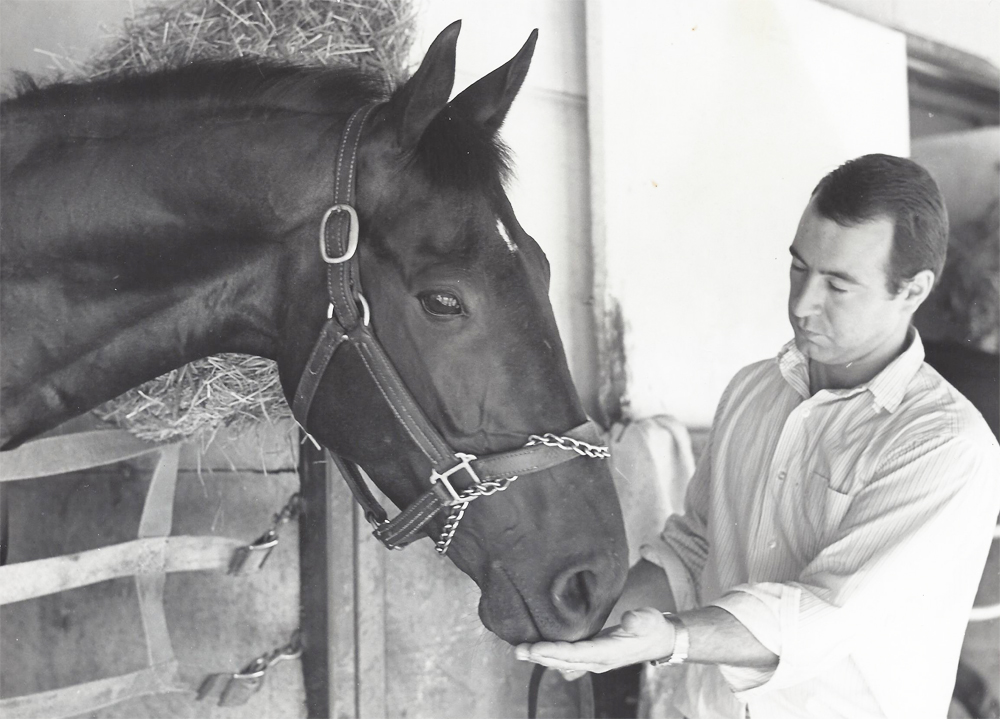
A young Wayne Elias with Charming Blue.
In the 1960s there was Charming Blue. This dark bay stakes winning gelding was the pride and joy of Tommy’s son Wayne, who shared his father’s passion for horses. There were many horses in Wayne’s life, but Charming Blue was special.
Wayne loved the horse and the horse loved him right back.
Charming Blue was an inconsistent runner. He’d pop-up every now and again with a win, usually when least expected. When he did come through, you were sure to get a good return on your win ticket. Two of his better efforts came in the 1967 Manitoba Derby Trial and the 1969 Wheat City Handicap.
As for his inconsistency, Wayne explained, “I was inexperienced and his off-races were more a statement on my training, than his talent.” Tommy’s best quote on the gelding’s quirks? “…when Charming Blue fires, no horse on the grounds can touch him.”
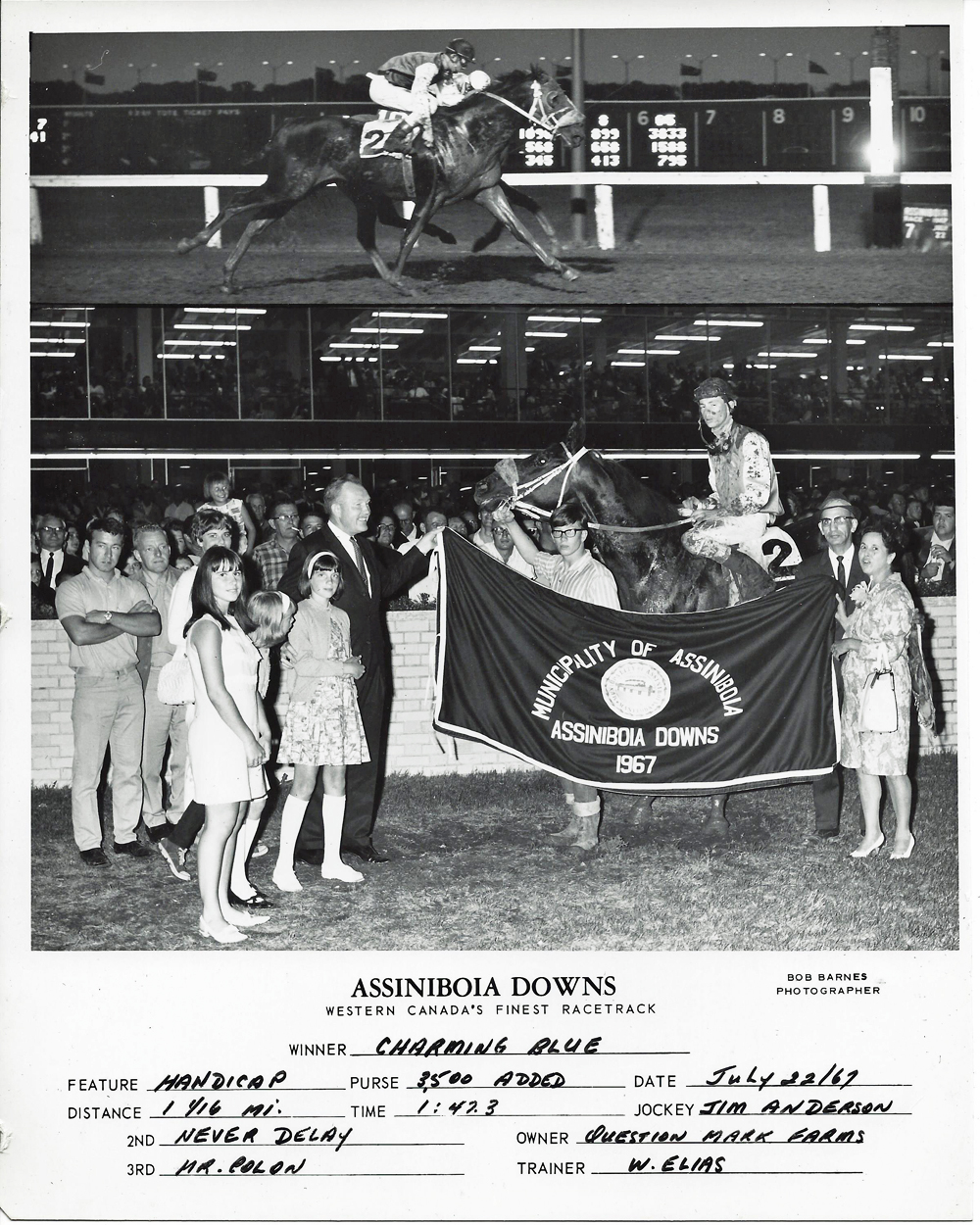
Charming Blue wins the Municipality of Assiniboia Handicap at ASD. July 22, 1967.
In the ‘70s, Tommy ran two mature thoroughbreds, often as a coupled entry. Remember those? Criollazo (Argentina-bred) and So Royal ll (Great Britain) were a fine pair of hard-knocking types that loved to go a distance of ground.
Purchased for $50,000, these two butted heads with the best on the grounds. In the mid-1970s that meant you were facing the likes of classy tough guys Sunraysed, Victor’s Pride, Turn To Rule, Persian Memories, Macale, Lexico and Federal Ruler.
In 1975 Criollazo won three allowance races. In 1976 he won the Polo Park Handicap, while garnering two thirds, one in the Gold Cup and the other in the Speers. So Royal ll won two allowance races in 1975 and another in each of 1977 and 1978, but it wasn’t very often that either or both didn’t get at least part of the purse.
So Royal ll retired at the age of nine and Criollazo at 13. At the age of 10, Criollazo was still running for a $10,000 claiming tag, although Tommy “lost” him via a $3,200 claim when he was an 11-year-old.
Lastly, we have One More Lady. In 1987 the late, great Don Gray described the multiple stakes-winning chestnut mare as “the fastest filly that ever stepped on this track.” At three, she won the Chantilly, at four the Astral Moon, Canada Day, and Winnipeg Sun, at five the Victoria Day and the Astral Moon, and at seven the Victoria Day and the Astral Moon; racking-up career earnings of $130,756 while sporting a record of 15-4-2 from 39 starts.
Tommy was a hands-on guy, but he didn’t go it alone. Son Wayne was there from the beginning. The younger Elias came with his own skills as farrier, owner and trainer and had a knack with certain horses. He’d spot a special one in need of some tender care, build them up, work them into shape and when everything aligned, turn them into distance specialists.
Wayne comes by his love of the sport honestly. He talked about an early experience that remains a strong memory. Wayne accompanied his dad on a visit to the backside of old Polo Park racetrack some 70 years ago. Tommy was going to visit friends and with young Wayne in tow that day they met up with Bob Watt, Bobby Franklin, and Dick Carey. Remember these guys?
All of these men would make their way to the “new” Assiniboia Downs when Polo went dark in 1956. Imagine the impact of this experience on a young impressionable horseman-to-be. Wayne was hooked before he even realized it.
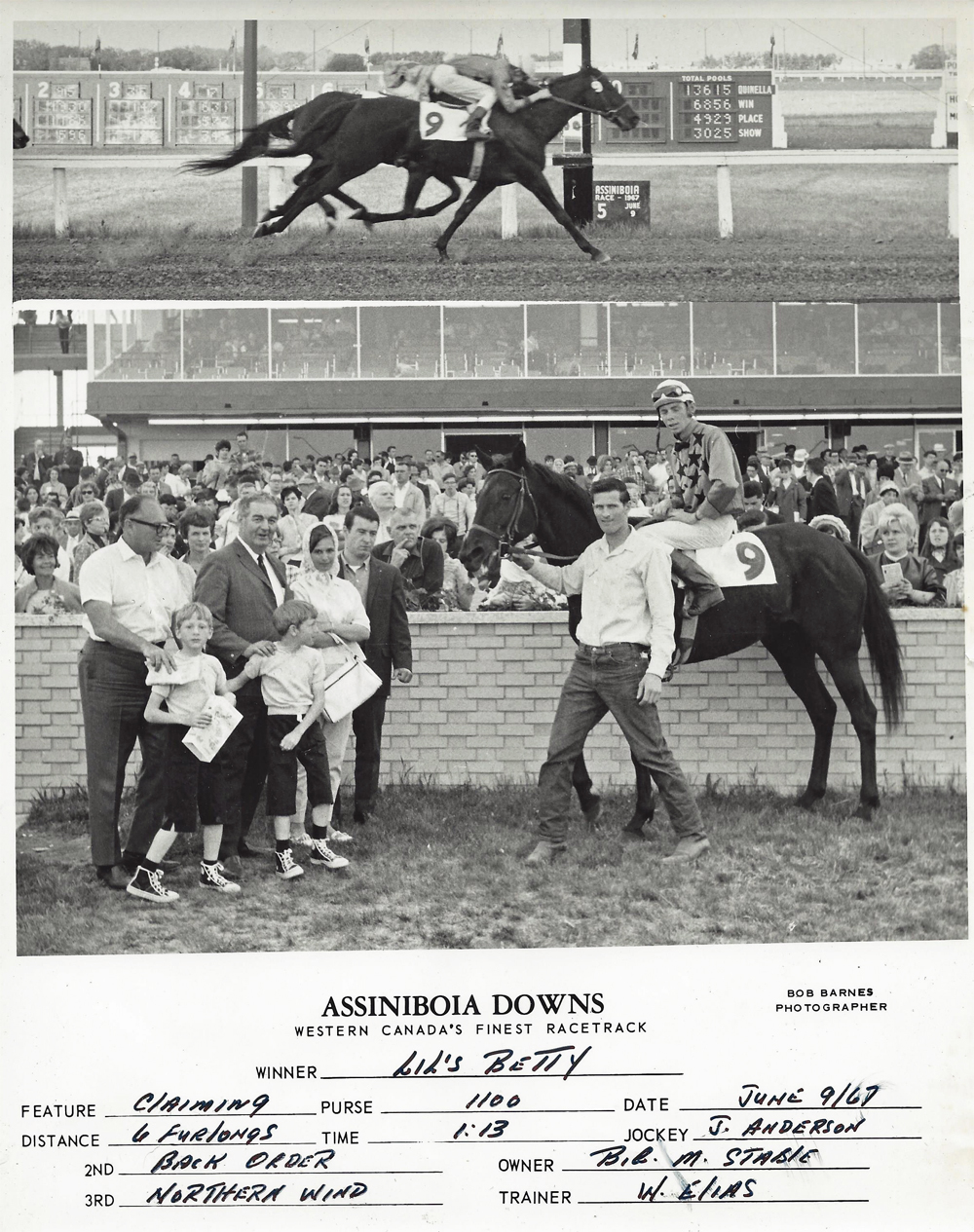
Wayne Elias. First career win as a trainer. June 9, 1967.
As a trainer, Wayne got his first career win (Lil’s Betty) on June 9, 1967 at the Downs. On the same night, the much older Bob Watt saddled career winner #100. Bob was the first conditioner in Downs history to reach the centenary mark. Wayne’s 100th win (Uptosen) would come 18 years later on September 14, 1985.
Tommy Elias is gone now, he passed in September 1987. The farm is gone as well, having made way for the Amber Trails subdivision. As Wayne looked out over the Downs’ amazing vista from the glassed-in second floor clubhouse, he recognized how is life had been shaped, oh so many years ago, and that he had his dad to thank for it all.
No “Question” about it.
